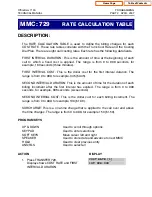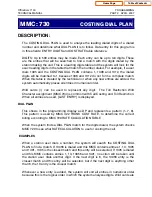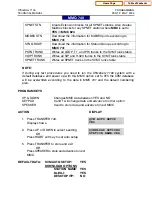
OfficeServ 7100
PROGRAMMING
TECHNICAL MANUAL
PART 2 APRIL 2007
MMC: 726
VM/AA OPTIONS
DESCRIPTION:
(NOT
USED
IN
USA)
This MMC is used to define all the in band DTMF codes sent to SLT voice mail ports
for an external VM system. These in band codes can be 0-9, A, B or C, and
performed two functions. Note that this MMC is not used for Samsung in-skin VM
systems.
1.
CALL AND TYPE INFORMATION
This is a DTMF signaling string sent to a voice mail port when the voice mail port
answers a call. This DTMF information tells the voice mail port what type of call it
is receiving and where the call is coming from. e.g. call has forwarded from
extension 225
2.
CALL PROGRESS TONES
These are sent to the voice mail system to provide information about the
progress of the call. e.g. ringback, busy or disconnect.
Most Voice Mail systems can utilize DTMF in band signaling for more efficient
call processing. This MMC has many parameters that can be programmed
according to the type of automated attendant and/or voice mail system
connected.
CALL and TYPE INFORMATION
The format of the DTMF data sent to a VM/AA port is as follows:
[CALL TYPE] + [DN1] + [SEPARATOR] + [DN2]
an example of this would be
[FORWARD ALL ] from [ 225 ] on trunk [ 703 ]
Each field can be programmed individually as follows:
EXTENSION FOR DN1:
If set to yes, when the voice mail auto attendant system
answers a call the OfficeServ 7100 will send data in the DN1 field indicating that
a station is ringing the VMAA port.
If set to no, when the voice mail auto attendant system answers a call the
OfficeServ 7100 system will not send station data in the DN1 field.
Home Page
Table of Contents







































